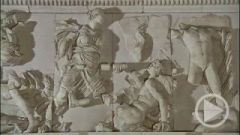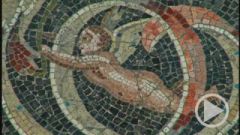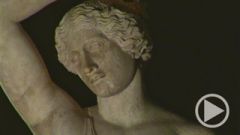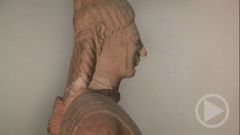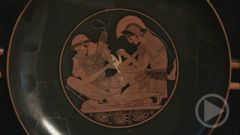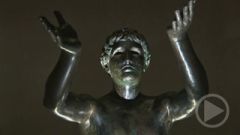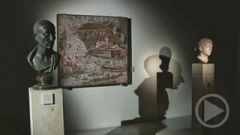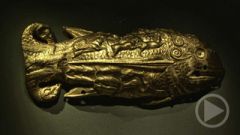- Home
- »
- Germany
- »
- Berlin
- »
- Museum Island
- »
- Pergamon Museum
- »
- The Collection of Classical Antiquities
- »
- The Pergamon Museum - Medea Sarcophagus
Medea Sarcophagus
Medea Sarcophagus
During the Roman Empire, wealthy Romans were often interred in lavish sarcophagi. The Greek legend of Medea was a particularly popular motif, perhaps because it is a tale of love and heavenly transport:
The enchantress Medea helped her beloved Jason to obtain the Golden Fleece from her father. The couple had two sons together. But Jason then deserted Medea to marry princess Kreusa, opening himself up to Medea's dreadful revenge. At first, she pretended to forgive Jason. Here on the left, he is looking at his children, who are bringing Medea's wedding presents: a dress and a chaplet, or wreath for the hair. Kreusa sits to the right under a festive garland of laurel. Kreusa’s hand is touching her groom. This is an elegant transition, because that figure of the young hero Jason is part of the next scene.
Kreusa has donned Medea's poisoned gifts – and is burning alive. Her father, Creon, is tearing his hair out in desperation. After the first murder, the children of Jason and Medea play unsuspectingly with a ball. But Medea has already drawn her sword and is about to take the ultimate revenge, killing Jason's – and thus her own – sons.
The last scene shows the aftermath of her horrific act. Her hair in a tangle, Medea mounts a cart drawn by dragons sent for her by Helios, the sun god. She has thrown one of her dead children over her shoulder; the feet of the other are visible on the cart.
There are many Medea sarcophagi, but this one stands out by virtue of its artistic mastery. It was probably done between 140 and 150 A.D. in the city of Rome.


